a&e features
Danger ahead?
Signorile on victory blindness, Aaron Schock and the path forward


Michelangelo Signorile says LGBT advances are at a dangerous place. (Photo by Jayne Wexler; courtesy Houghton Mifflin Harcourt)
Michelangelo Signorile
‘It’s Not Over’ book tour
Wednesday, April 22
Politics and Prose
5015 Connecticut Ave., N.W.
7 p.m.
free
With even anti-LGBT forces conceding a turning tide against them in the marriage wars, gay rights activists are in a place they like with same-sex marriage support polling higher than ever (only 33 percent oppose according to last month’s NBC News/Wall Street Journal poll) and marriage equality in 37 states plus D.C.
But marriage, of course, isn’t the only issue and radio host and author Michelangelo Signorile says the movement is in danger of succumbing to “victory blindness,” a phenomenon wherein “we’re overcome by the heady whirl of a narrative of victory, a kind of bedtime story that tells us we’ve reached the promised land, that can make everything else seem like a blur.” In his new book “It’s Not Over: Getting Beyond Tolerance, Defeating Homophobia & Winning True Equality,” a wide-ranging book culled from years of activism and insight gleaned from his long-running eponymous show on Sirius XM radio, Signorile warns of potential dangers ahead.
Dubbed both “a wake-up call” and “a battle plan for the fights to come,” Signorile, who’ll be in Washington to promote it and sign copies at Politics & Prose next week, says there’s much work to do. Though he makes a compelling case, we played devil’s advocate with him by phone for an hour last week. His comments have been edited for length.
WASHINGTON BLADE: The book is so timely and full of up-to-the-minute developments. Aren’t you concerned it will be outdated very quickly?
MICHELANGELO SIGNORILE: It’s the nature of our entire communications industry that everything moves so quickly and books occupy a different place than they used to. They have to do something different. What had continued to strike me over the last few years is that although we kept having these victories, the facts on the ground weren’t matching the celebrations and there was still a lot of discrimination. That was something that was remaining true regardless of what the latest victory was …. so it was really an issue of which examples to use. Some of the older ones, I just decided not to use. There were newer ones that would carry the basic idea through.
BLADE: In the last chapter you outline what you feel is the best way to proceed from here. Nobody has a crystal ball, but with the information you have, how likely do you feel that scenario is?
SIGNORILE: It’s hard to know because if you had asked me 10 or 15 years ago, how soon we would have full marriage equality, I would have said 25 or 50 years, something like that, so I think it could happen a lot quicker but a lot of it really is related to how kids are taught about gender and sexual orientation, that really is key. … In terms of getting full civil rights, who knows when Democrats will have full control again. I almost see that as taking longer, maybe 10 years or more.
BLADE: You write about the dangers of “victory blindness.” Do you see any parallels or mistakes at comparable points in the African-American civil rights movement or the women’s movement that we can avoid? Do any of the rumblings that still bubble up in society on those issues stems from issues of victory blindness their respective leaders might have succumbed to at comparable points to where we are now?
SIGNORILE: Yeah, we’ve seen victory blindness with every group and every civil rights movement. There’s a point where there’s a major win and a lot of people become complacent and apathetic and pull back and it’s really the worst time for that to happen because that’s really when the opponents really begin to organize in a fierce way and take advantage of that apathy and we have certainly seen that with women’s rights. If you go back to the ‘70s, … there was a real cultural shift and the sexual revolution and then people kind of thought it was over, we’d arrived. People don’t anticipate the backlash, often in the form of a religious revival, which we saw in the ‘80s with the Christian evangelical revival, which has happened at various times all throughout history. … Now we’re seeing the Voting Rights Act stripped away, another clear example where people don’t anticipate the backlash. You can change the laws, but it doesn’t change the attitudes and you can’t just say it’s over.
BLADE: But couldn’t that be construed as an argument in favor of the incrementalist approach you argue against in the book? If you don’t come in like such a barnstormer, wouldn’t it stave off some of the fervor of the backlash?
SIGNORILE: I think you do have to come in like a barnstormer and demand full equality and then stick with it. The problem is people get a part of it and may even get much of it, but then don’t stick with it for further change. Whether you do it incrementally or not, your enemies will still organize against you. I don’t think you’re taken seriously when you just ask for a little bit or crumbs and I don’t think it really energizes and captivates your own people and the larger public when you do it that way. You have to really demand that full equality and whatever you get you get, but then you have to stick with it and keep fighting for it. … The lesson for a minority is that you’re always going to be fighting. The roots of bigotry go very deep.
BLADE: So is it a mistake for groups like Freedom to Marry to say they’ll close if the Supreme Court rules in our favor?
SIGNORILE: I think it depends how they’re talking about it. Evan Wolfson has been very clear that the fight is far from over. … The bigger problems are the groups that only like to focus on winning and see it as a downer or not good fundraising to focus on losing. That’s the real problem because then you look like you’re not taking up a fight, like you’re in denial. None of us can still figure out why HRC was silent through the entire period when Arkansas passed that law that rescinded all the civil rights ordinances. Yes, the local HRC chapter said a few things but we heard nothing at all from Chad Griffin, no national press release, nothing. I don’t know what to conclude from that but it seems they gave up and thought, “Well, it’s a loser.” Then a couple weeks later, they were focused on the religious liberty law in that state which they were able to beat back. It just seems they were picking what they could win … but I don’t think it does us any good when it looks like we’re running away from battle. (HRC declined to comment.)
BLADE: You’re gay and include some biographical passages in the book. Might it be more compelling to the moveable middle if there was somebody out there who was making these points who didn’t have a proverbial dog in the fight? Is anyone doing that?
SIGNORILE: I don’t really see this idea of more objectivity in journalism as something that really furthers discussion because you can’t really claim to be objective but you can be fair and open and you can entertain the thinking of those who disagree with you. … There are people like Rush Limbaugh who have their own point of view and just shut everybody else out and then you have the New York Times that claims it’s objective but that’s really impossible because even what you omit from a story requires subjectivity. I would prefer outlets that say, “This is our opinion, but let’s entertain their thoughts and see what they think.” That’s what I try to do on my show. I always try to talk to people who are oppositional. I may have arguments and it may get passionate, but I don’t shut them out. Actually people who call my show who are on the opposite side are more likely to get on because I think we need to have a discussion.
BLADE: You never hear anybody arguing against our issues that it’s not one step removed from some sort of religious argument. You never hear of an atheist arguing against gay rights but nobody really seems to point that out. Why?
SIGNORILE: I’ve made that point sometimes. Somebody always comes forth and mentions some obscure historical figure who was an atheist but was supposedly still anti-Semitic or anti-gay but I do believe whether someone is religious or not, the ideology all stems from religion. I don’t think there’s any natural aversion to homosexuality. What religion has done to modern society is really demonize homosexuality and in that sense it really is all religion-based. A lot of the media have a hard time having any kind of discussion about it without bringing some religion person on and I think they need to stop doing that because if that’s your religious belief, that’s the end of that but if you want to argue with two people coming at it from a scientific point of view, they can’t seem to find anybody because it’s all religion-based.
BLADE: Why don’t we have more Republican allies? With Republican ideals of less regulation, freer trade, fewer embargoes, why doesn’t some of that brand of thinking trickle down to more personal freedom on our issues?
SIGNORILE: There are some free market fiscal Republicans who are not anti-gay themselves and do not agree with those who want to ban marriage or throw gays out of a restaurant or whatever, but the short answer is that it’s because the religious right still has such a stranglehold on the party it has to contend with so I still hold those other people accountable if they’re still comfortable being in that party and still vote with those who have an anti-gay point of view. It becomes a bit more difficult for the party because they can’t stomach any more blatant ugly homophobic language so they have to adapt the language a bit. It still slips out every now and then, like with women’s issues when somebody says “legitimate rape” and it ruins everything again. But instead of trying to shun those people, they try to rephrase and rebrand those arguments so others will be more comfortable being in the party. Now they’re going with the religious liberty argument hoping that will stick.
BLADE: You write about the spillover into pop culture and the ramifications of that. We have strong representation on hit shows like “Orange is the New Black” and “RuPaul’s Drag Race.” But invariably shows like “Duck Dynasty” and the Duggers’ show “19 Kids and Counting” come along and go through the roof becoming a mega cultural phenomenon. Are we going to look back in 20 years and see them as cultural anachronisms a la “Amos ’n’ Andy”? When attitudes are clearly changing in our favor, how do these kinds of shows get such traction?
SIGNORILE: These shows are a reflection of where the culture is and it’s quite clear there are millions of people out there who connect with these shows. Don’t forget that even though the people who run the industry might themselves be described as liberal, they know where the money is and where it isn’t and where it isn’t is in portraying LGBT people in a more realistic way. I think we’ll look back on “Modern Family” and say, “OK, why did these people never have any real connection.” There isn’t any discernible sexual energy between them. It’s been sanitized … to be more palatable to a mainstream audience in a way that won’t scare them.
BLADE: You say Aaron Schock should have been grilled and investigated a lot harder on possibly being a closet case. Lots of people argued there was no smoking gun and that everybody was just speculating based on tired stereotypes like the way he dressed and decorated his office. Short of some gay sex tape leaking, which is highly unlikely, these kinds of things become very hard to prove and any discussions end up being based on innuendo and stereotype. Is that unfair? How acute or fair do you feel the public’s overall gaydar is?
SIGNORILE: Well, what’s been forgotten in all this is the Itay Hod story …
BLADE: Well that sounded really wobbly — a second-hand thing where he didn’t even say for sure whom he was talking about.
SIGNORILE: He now has confirmed that’s who he was talking about and so while yes, it’s a second-hand source, it’s not something based on how he dresses or looks, but a second-hand account based on a sexual interaction. All of these issues are troublesome because they’re treated differently than they would be with any other story about a public figure. All of a sudden if it’s a gay rumor, we have a much higher burden of proof than we have with anybody else. Why didn’t anybody go investigate this? Why didn’t anybody go to Iowa? Why didn’t anybody go to Dupont Circle and start asking around? We have no problem going through Ted Cruz’s records. Why was this treated differently?
BLADE: How do you know that didn’t happen? Perhaps nothing was found.
SIGNORILE: I don’t think it happened. I asked specifically if people were looking into it and it seemed reporters were just not interested. They saw it as some sort of prying. What’s wrong with us talking about it? People go digging into Rand Paul’s background and he was maybe using a bong in college or whatever. Nobody attacks them as invading his privacy but with Schock, it’s a case of unless you have the proof, you can’t even talk about it. We take tips from visual cues all the time. The whole story of his downfall came from a visual cue, the way he had his office decorated which looked like excess and like maybe he was spending public money. Nobody had any proof, but they started looking into it and they found that he was doing lots of things that were very lavish and getting them paid for in all kinds of creative ways. … On this issue, they treat it differently and it’s not something they want to look into or talk about and I think what shows is that they’re still very uncomfortable talking about the issue of homosexuality.
BLADE: Have we ever really dismantled the slippery slope argument against marriage? We tend to laugh it off and say we’re not marrying our daughter or an animal, yet it still seems to play so well in the heartland and in the South. What’s our best response to that and what does it mean for the poly-inclined among us?
SIGNORILE: I think it really is kind of a ludicrous argument because we’ve changed marriage probably a thousand times over the last several hundred years and we always change it in the way society comes to believe it should be changed, at least in a democratic society. We’ve shown before how it was unfair to women, unfair to children, that women should have more rights and rights to divorce as well to make it easier to get out of abusive marriages. Now we’ve made the argument of why gay people should be included. The polygamy argument was made a long time ago by the Mormons and it didn’t take off and the Supreme Court didn’t go with that. When they keep saying, it’s going to lead to polygamy and all that, well, the Bible has that. That’s what it was and you know, it just seems to me they keep grasping at straws every time they argue that. There is no movement of people in this country who want to marry animals, there’s no organizing around that that has tried to capture the public imagination. They say, “Well, once the door is open …,” but the door is always open on every institution for rational change and marriage has changed too. We’ve made it better.
BLADE: How did you feel about John Aravosis ending AMERICAblog?
SIGNORILE: I think it’s a tough time for blogs as social media has become the real force. John was at the forefront of so much activism, particularly in the early years of blogging … in the way people now do on social media. I think he and others used that forum for activism in the best possible way you could at the time and I think the forum shifted and it has become more difficult to do that and to sustain it, so hats off to him for the work he did in those years. I’m glad he was able to transition.
BLADE: What would happen in our worst-case scenario? Say we get a Republican president elected to two terms who gets to appoint several Supreme Court justices who really bring out the guns. Do we have enough groundswell support to combat that in any substantive way and if so, what does that even look like? Would everything just get pushed back a generation or could some extreme scenario play out where the whole movement has to go underground?
SIGNORILE: It’s so hard to tell and I think any of those things are possible. We talked about how I think the arguments made to the general public are weak, but what the general public thinks often doesn’t matter because it becomes about who’s on the court and who’s lobbying and who’s in Congress and where the money is. The majority of the public believes we should have tougher gun laws but we don’t because of the NRA. And most people think Citizens United was a terrible decision and we could make the argument in the court of public opinion, but what most people don’t realize is that we’re likely going to get marriage equality because one man on the court (Justice Kennedy) thinks gay people should have some protection. He may now get another man on the court to agree with him, but he’s thought that for a while. Not in the same way legal progressives have, but he’s thought that. He’s made terrible decisions on women’s rights and terrible decisions about voting rights. It’s all so precarious and arbitrary and that’s what people don’t get. They think there’s some sort of natural thing going on, some sort of natural evolution toward justice that’s happening but what we’re dealing with is a Supreme Court that by the luck of the draw on this issues, has the five votes and may convert a sixth but we all know that could change at any time. If there’s a Republican president to replace Justice Kennedy and more gay rights issues come up, who knows what could happen. I think a lot people aren’t really thinking about how precarious this all really is.
a&e features
Your guide to D.C.’s queer New Year’s Eve parties
Ring in 2026 with drag, leather, Champagne, and more
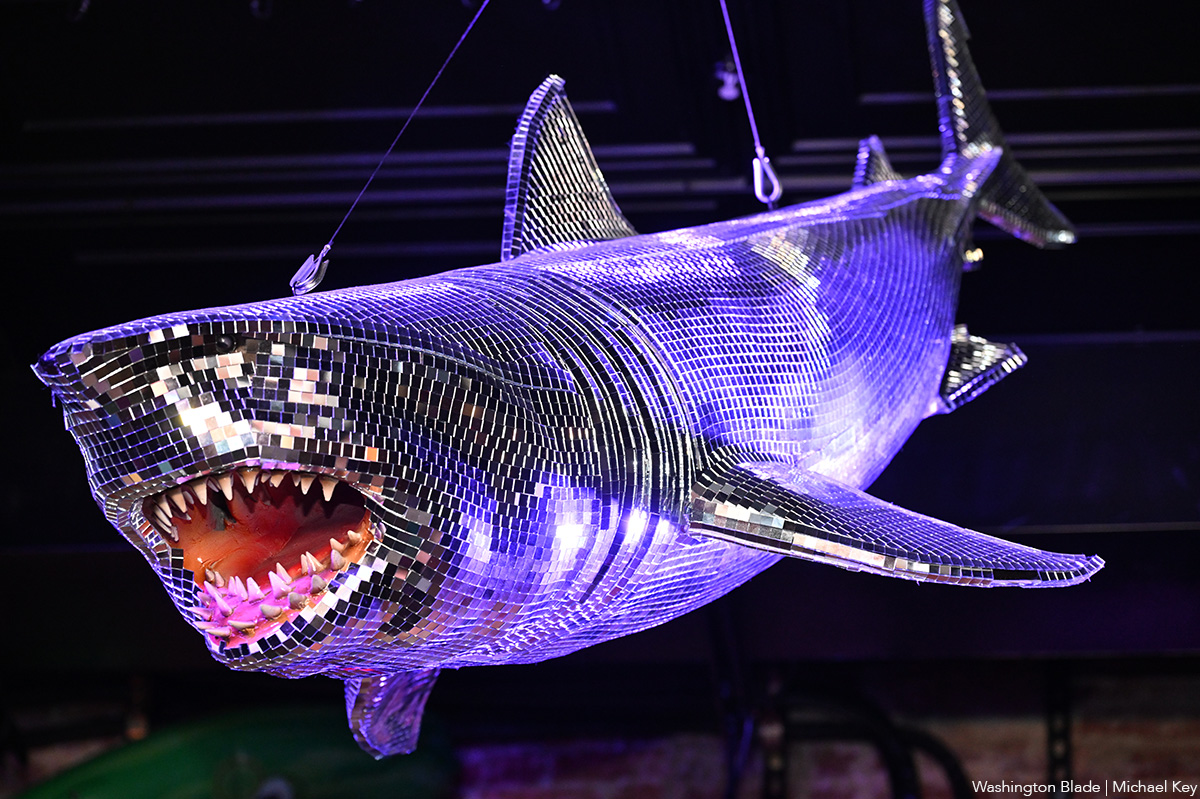
With Christmas in the rear view mirror, we can turn our attention to ringing in a much-anticipated New Year with a slew of local LGBTQ parties. Here’s what’s on tap.
Pitchers
This spacious Adams Morgan bar is hosting the “Pitchers’ Perfect New Year’s Eve.” There will be a midnight Champagne toast, the ball drop on the big screens, and no cover, all night long. The bar doesn’t close until 4 a.m., and the kitchen will be open late (though not until close). All five floors will be open for the party, and party favors are promised.
Trade
D.C.’s hottest bar/club combo is leaning into the Shark motif with its NYE party, “Feeding Frenzy.” The party is a “glitterati-infused Naughty-cal New Year’s Even in the Shark Tank, where the boats are churning and the sharks are circling.” Trade also boasts no cover charge, with doors opening at 5 p.m. and the aforementioned Shark Tank opening at 9 p.m.. Four DJs will be spread across the two spaces; midnight hostess is played by Vagenesis and the two sea sirens sensuously calling are Anathema and Justin Williams.
Number Nine
While Trade will have two DJs as part of one party, Number Nine will host two separate parties, one on each floor. The first floor is classic Number Nine, a more casual-style event with the countdown on TVs and a Champagne midnight toast. There will be no cover and doors open at 5 p.m. Upstairs will be hosted by Capital Sapphics for its second annual NYE gathering. Tickets (about $50) include a midnight Champagne toast, curated drink menu, sapphic DJ set by Rijak, and tarot readings by Yooji.
Crush
Crush will kick off NYE with a free drag bingo at 8 p.m. for the early birds. Post-bingo, there will be a cover for the rest of the evening, featuring two DJs. The cover ($20 limited pre-sale that includes line skip until 11 p.m.; $25 at the door after 9 p.m.) includes one free N/A or Crush, a Champagne toast, and party favors (“the legal kind”). More details on Eventbrite.
Bunker
This subterranean lair is hosting a NYE party entitled “Frosted & Fur: Aspen After Dark New Year’s Eve Celebration.” Arriety from Rupaul Season 15 is set to host, with International DJ Alex Lo. Doors open at 9 p.m. and close at 3 p.m.; there is a midnight Champagne toast. Cover is $25, plus an optional $99 all-you-can-drink package.
District Eagle
This leather-focused bar is hosting “Bulge” for its NYE party. Each District Eagle floor will have its own music and vibe. Doors run from 7 p.m.-3 a.m. and cover is $15. There will be a Champagne toast at midnight, as well as drink specials during the event.
Kiki, Shakiki
Kiki and its new sister bar program Shakiki (in the old Shakers space) will have the same type of party on New Year’s Eve. Both bars open their doors at 5 p.m. and stay open until closing time. Both will offer a Champagne toast at midnight. At Kiki, DJ Vodkatrina will play; at Shakiki, it’ll be DJ Alex Love. Kiki keeps the party going on New Year’s Day, opening at 2 p.m., to celebrate Kiki’s fourth anniversary. There will be a drag show at 6 p.m. and an early 2000s dance party 4-8 p.m.
Spark
This bar and its new menu of alcoholic and twin N/A drinks will host a NYE party with music by DJ Emerald Fox. Given this menu, there will be a complimentary toast at midnight, guests can choose either sparkling wine with or without alcohol. No cover, but Spark is also offering optional wristbands at the door for $35 open bar 11 p.m.-1 a.m. (mid-shelf liquor & all NA drinks).
a&e features
Local, last-minute holiday gift ideas
Celebrate the season while supporting area businesses

The DowntownDC Holiday Market is bustling. Union Station is decked out with its annual Christmas tree. Washingtonians have wrapped their houses and apartment balconies with festive lights and holiday decorations. The holiday season is here. And with stockings to fill and empty space under the tree, Washington’s local shops and artists have plenty to offer.
Show your LGBTQ and D.C. pride with the Washington Blade’s annual holiday gift guide.
To embrace the holiday buzz: The Blanco Nwèl cocktail from Alchy Cocktails. This Caribbean eggnog is one of Alchy Cocktail’s seasonal holiday cocktails. The flavor profile is similar to coquito, a traditional Puerto Rican Christmas drink with a coconut base. As a queer and Caribbean-owned business, Alchy Cocktails has been based out of Washington since 2021. Blanco Nwèl is available in both cocktail ($24) and mocktail ($12) online and at a variety of holiday markets, including the Tingey Plaza Holiday Market, the Flea Market at Eastern Market, Union Station’s Main Hall Holiday Market, and more. ($24)
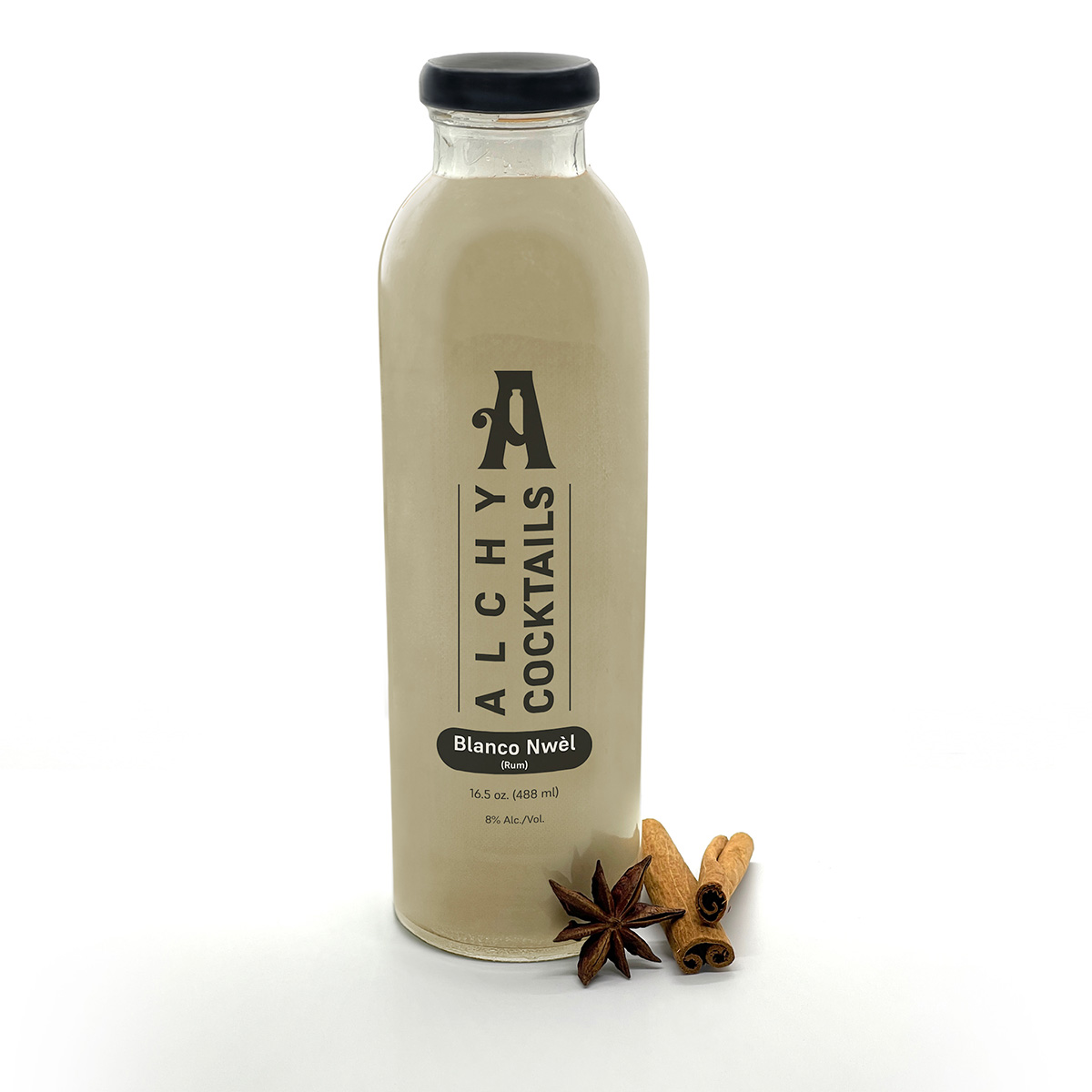
A spicy bite: Gordy’s Cajun Okra from Salt and Sundry. These spicy, tangy pickles pull on Southern Cajun-style flavors, packing a punch with paprika, cayenne, and more. Gordy’s is an LGBTQ-owned and Washington-based brand, making this gift an opportunity to support a local LGBTQ business straight from the jar. This pantry staple is available on Salt & Sundry’s website and at its locations in Union Market, Logan Circle, and its Georgetown holiday pop-up store. ($14)
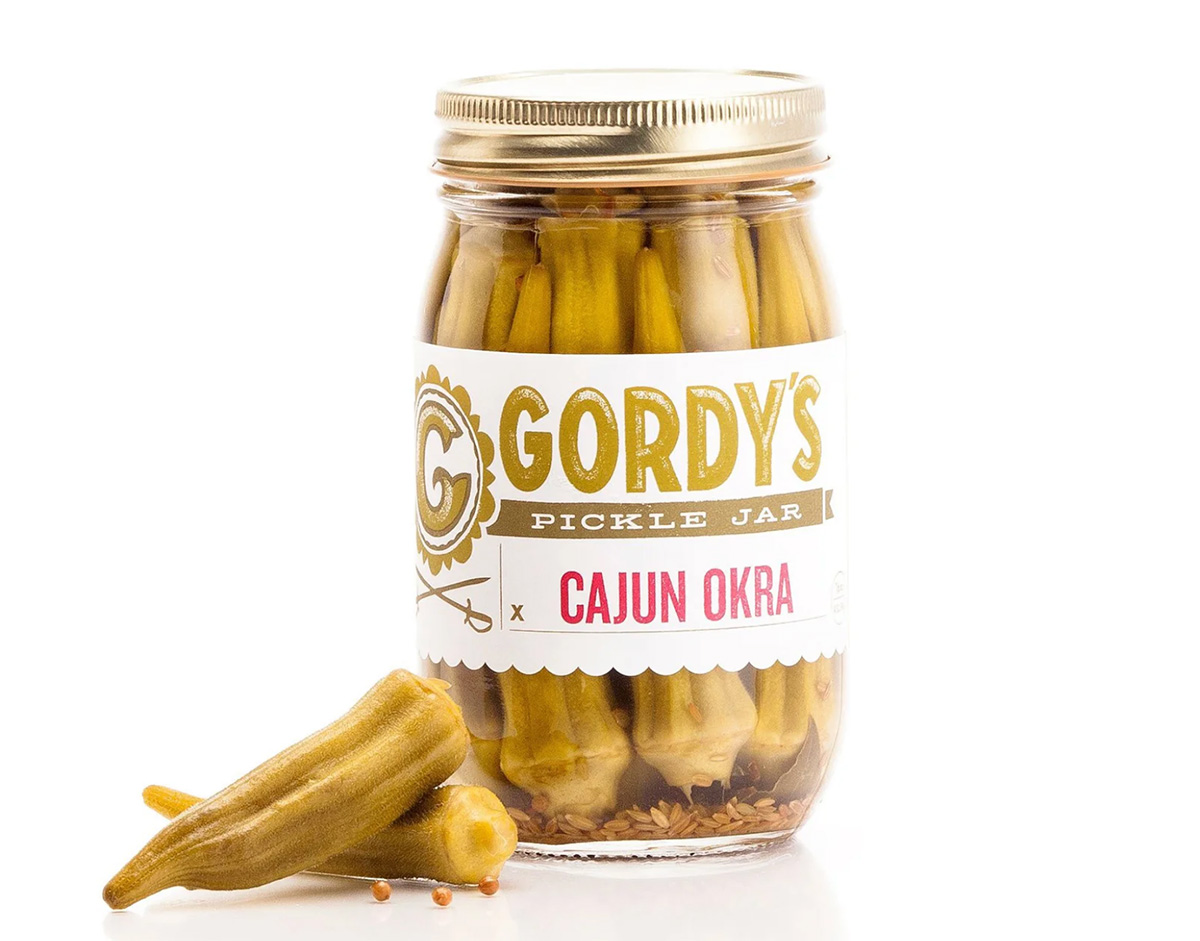

To celebrate Washington pride: The DC Landmark Tote Bag from The Neighborgoods. Native Washingtonians, visitors, friends and family alike will find something to love about this Washington-themed tote bag. Food trucks, the 9:30 Club, the Metro logo and pandas from the National Zoo are just some of the city’s landmarks depicted across the tote in a red, white, and blue color palette. The tote is a part of the DC Landmarks collection, which donates 10 percent of its sales to the American Civil Liberties Union. The Neighborgoods itself is a local, woman-owned business built out of a passion for screen-printing in 2013. The 100 percent cotton canvas tote is for sale online or at the DowntownDC Holiday Market. ($22)
To give friends and family their flowers: The Flowers Bandana from All Very Goods. This 100 percent cotton bandana was designed in Washington and hand printed in India. Its uniqueness comes in being covered with the faces of Black women, representing a “love letter to all women but especially Black women,” according to All Very Goods. The Black woman-owned and operated business, based out of Northwest Washington, has a mission to celebrate diversity and representation through its products. The bandana intends to give Black women their “flowers.” The Flowers bandana is available for purchase online. ($24)

To unlock culinary creativity: The Curious Chef Gift Collection from Each Peach Market. This customizable collection of kitchen oddities — ranging from tinned fish to chili oil — is a quirky gift for the most inventive chefs. The collection is available in a Standard Santa, Extra Goodies and Super Holiday Size for up to $165. The Washington-based market, founded in 2013, permits customers to make the collection special by specifying what unique ingredients are packaged, including products made by local or LGBTQ brands. Each Peach Market offers assembly and pick up in-person at its Mount Pleasant shop and also offers local delivery and nationwide shipping via its website. ($85)
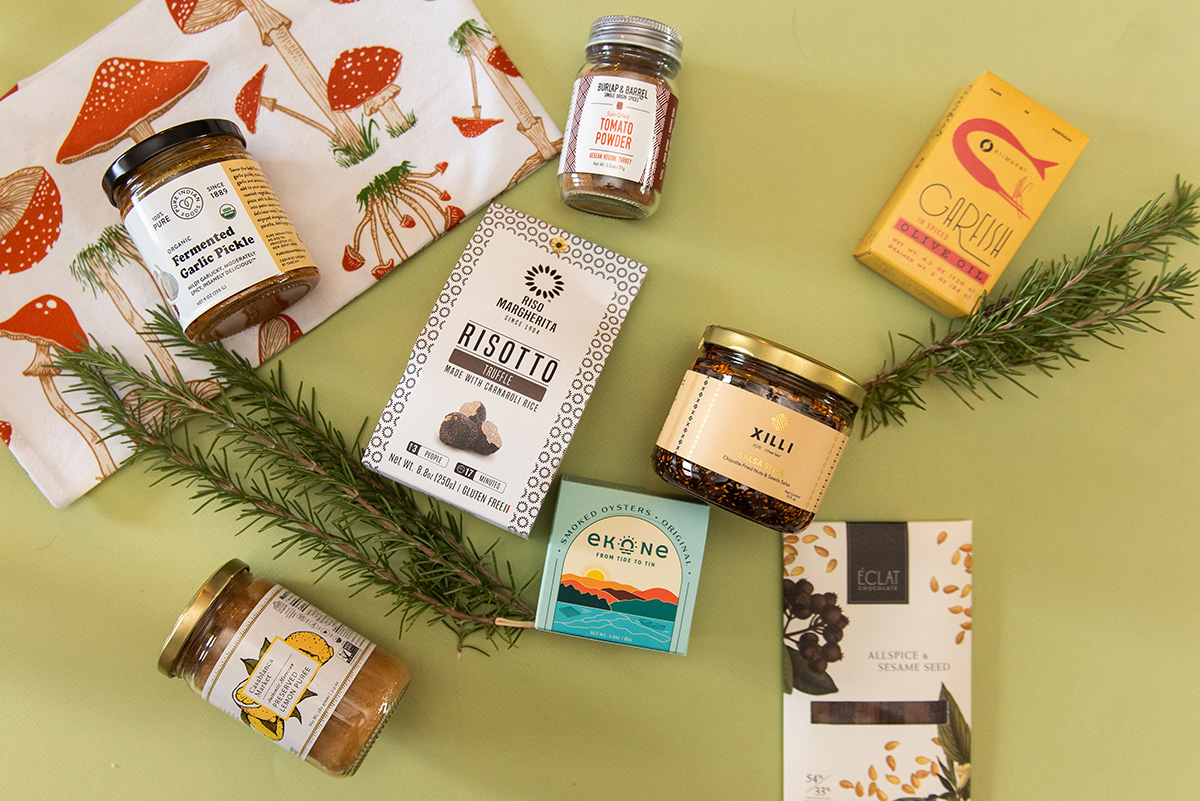
To give a touch of sweetness: The DC Landmark Chocolate Covered Oreo Holiday Cookies from Capital Candy Jar. Wrapped in a festive red bow, this box of nine cookies embraces love for Washington and the holiday season in one. Among the dark and milk chocolate covered cookies are images of the U.S. Capitol, the White House, the Lincoln Memorial, the Jefferson Memorial and festive hollies. The treat, packaged in a Hill East facility just a few blocks from the Capitol, is available for purchase online and at the DowntownDC Holiday Market. ($23.95)


To celebrate queer gaming: Thirsty Sword Lesbians from Labyrinth Games & Puzzles. This roleplaying game embraces lesbian culture by unlocking a world of swords, romance, and battle. Ideal for group settings, the book presents a system of world building and character identities that are best brought to life by creative minds. Labyrinth, which has been a local Washington business for more than 15 years, celebrates non-digital fun through games and puzzles that connect the community. This gift is offered online and at Labyrinth’s Capitol Hill location. ($29.99)
To make a bold statement: The “Resist” T-shirt from Propper Topper. This locally screen-printed black tee features the Washington flag designed within a raised fist, symbolizing both Washington pride, and political resistance. The shirt is made exclusively by Propper Topper, a local Washington business that evolved from a hat shop to a gift store since opening in 1990. The tri-blend unisex shirt is available both for pickup at Propper Topper’s Cathedral Heights location and shipping via the online site. ($32)
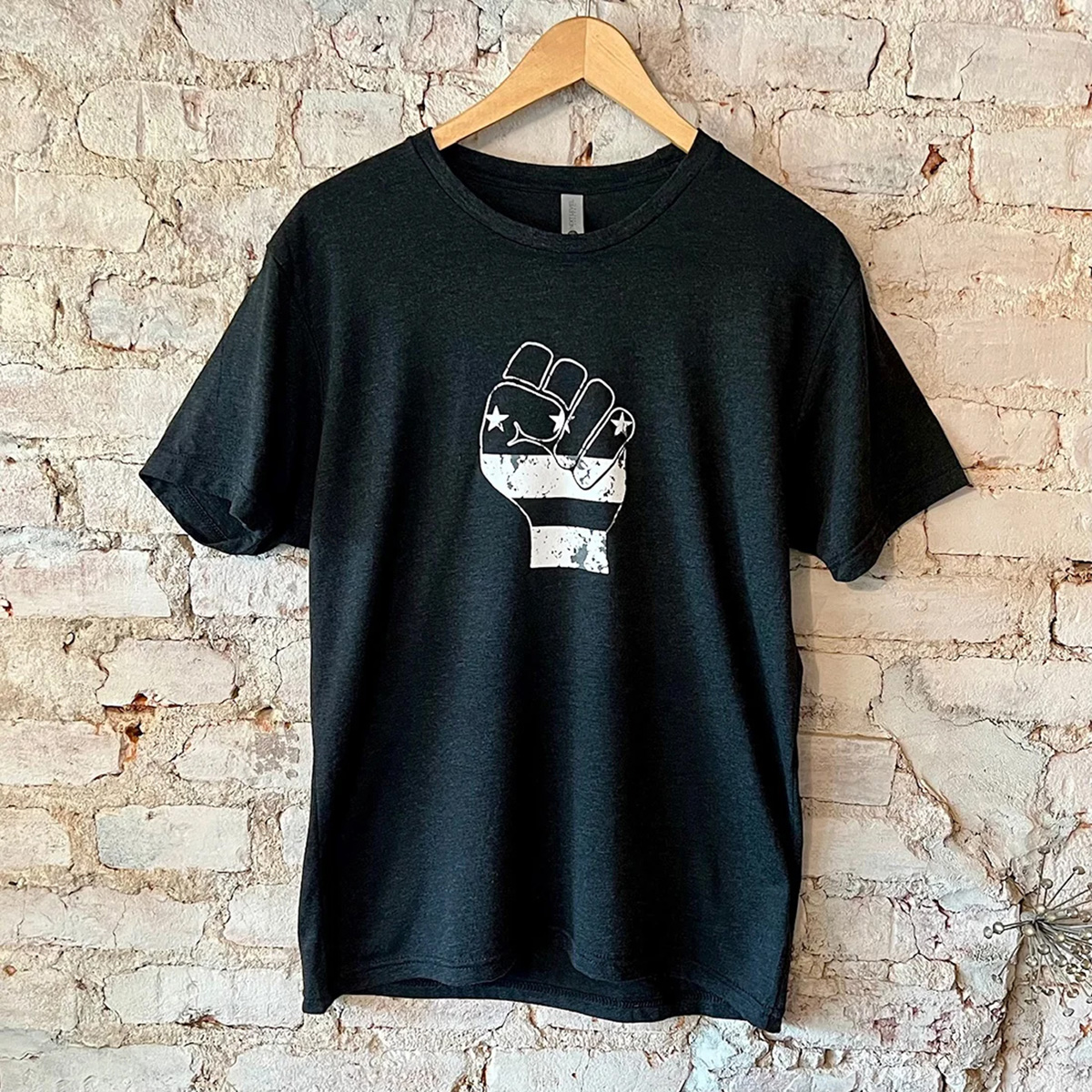
To keep it c(g)lassy: The Glass Ball earrings from Blue Moon Aquarius. Gifting can rarely go wrong when it comes to a new pair of earrings. The unique statement earrings — made of polymer clay, glass, and 18k gold plating over surgical steel — are hand cut, sanded and assembled in Washington, meaning each set is unique. Blue Moon Aquarius, a local brand, is known for its small batch jewelry and home decor designed with clay materials. Available in oxblood, hunter green, lavender, and bluestone color palettes, these earrings are available for purchase on Blue Moon Aquarius’ website and at the DowntownDC Holiday Market. ($48)
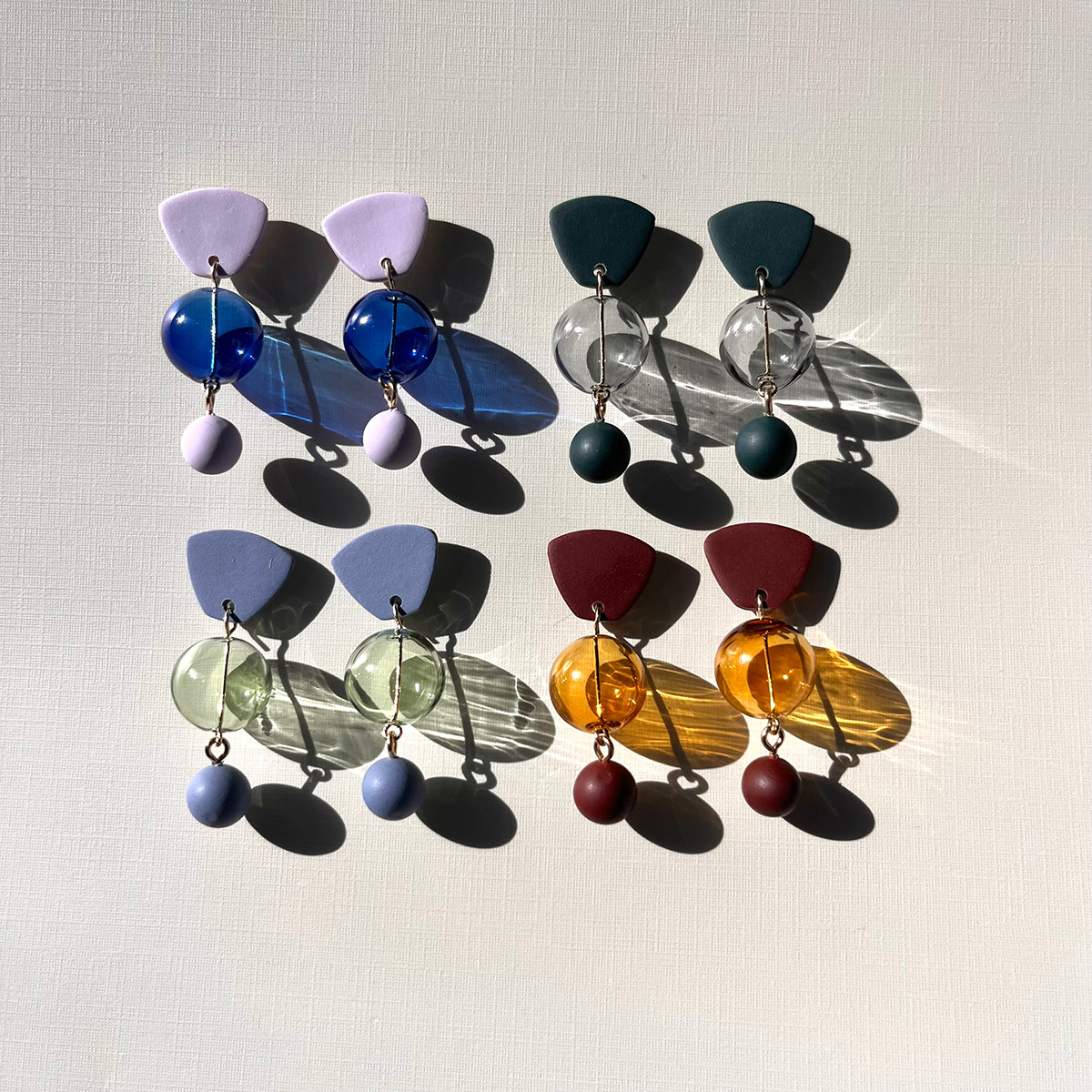
To elevate a holiday tea or charcuterie party: The Honey Flight: Tea Lover’s Selection from BannerBee. This local honey company presents the ideal gift to make cozying up with a cup of tea slightly more special. The Honey Flight contains three types of raw wildflower honey infused with fair trade Ugandan vanilla bean, chai spices, and locally sourced lemon thyme herb. The gift is also an opportunity to uplift a family company based in the Mid-Atlantic that offers all-natural, sustainable products. The flight is available online, at the DowntownDC Holiday Market or at the Arlington Courthouse and Dupont Farmers’ Markets. ($36)
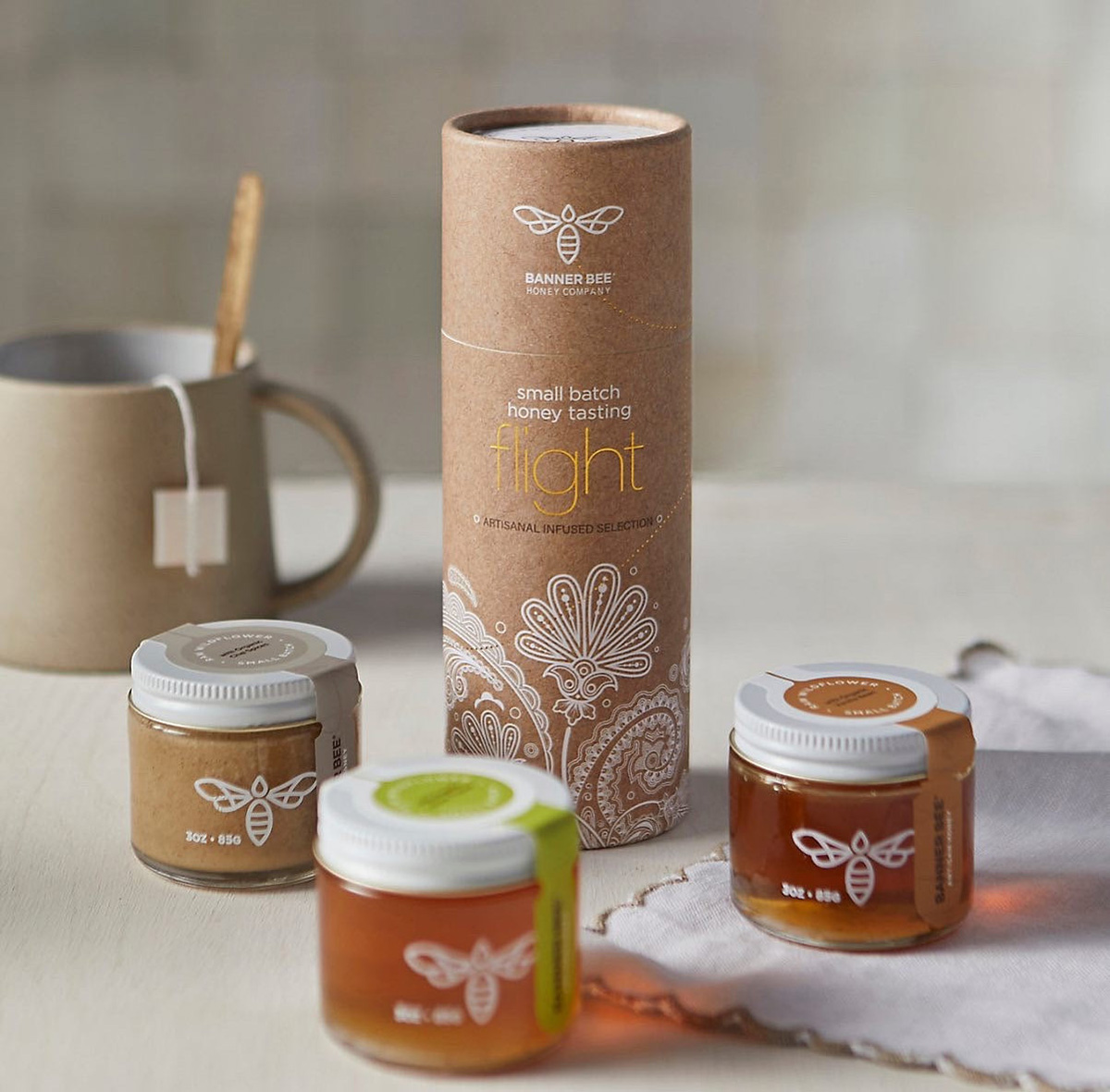
For Baltimore shoppers: If you’re in Charm City, don’t miss Balston Mercantile, opened by a gay couple in June. Their gorgeous shop in the Hampden neighborhood offers an array of unique, upscale finds, from barware and artwork to cookbooks and home decor and more. (849 W. 36th St.)
a&e features
Have yourself a merry John Waters Christmas
Annual holiday show returns to Alexandria and Baltimore
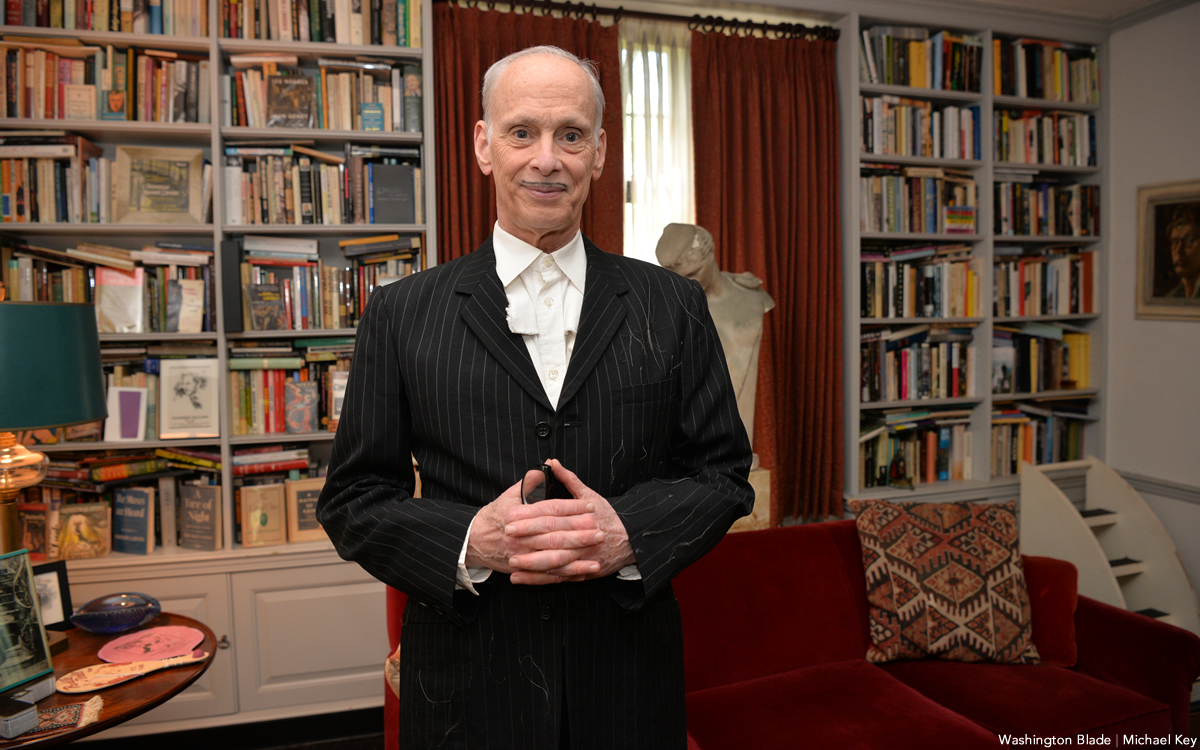
When it comes to iconic Christmas scenes in movies, none can top the tree-toppling tantrum thrown by cha-cha heels-deprived Dawn Davenport in John Waters’s fifth full-length feature “Female Trouble” from 1974. Therefore, it’s not surprising that Waters continues to make art out of Christmas, performing his spoken word Christmas tour in cities across the country. Waters has even more reason to celebrate with the release of his new red vinyl 7” single, a cover of Little Cindy’s “Happy Birthday Jesus (A Child’s Prayer)” on the A-side, and “A Pig Latin Visit From St. Nicholas” on the B-side. If you’re still looking for unique Christmas gifts, consider this record. As always, John was kind enough to make time for an interview in advance of his tour dates.
BLADE: John, in preparation for this interview with you, I went back and listened to Little Cindy’s original rendition of “Happy Birthday Jesus (A Child’s Prayer)” on your “A John Waters Christmas” CD.
JOHN WATERS: One thing I did, if you notice, I make the same stumble in my recording that she did in the original.
BLADE: It sounded to me like she got choked up.
WATERS: No, I think she just stumbles over a word, so I stumbled over the same word. It’s appropriation, insanely.
BLADE: Is this a song you first became aware of in your youth or when you were an adult?
WATERS: When I was doing the Christmas album, I had this friend named Larry Benicewicz. He was kind of my idea man with music. He knew every single old record. I would say to him, “Weird Christmas songs,” when we were doing a soundtrack, or a song about bears, or a song about this, and he would give me all these tapes. It was one of the ones he played for me. A lot of the songs I put in my movies and on my records, I did know as a kid. I did not know this one, but I immediately embraced it. I don’t think it’s campy. I think it really is spiritual in a weird way. My doing it makes it a novelty record. I am really for novelty records, and there aren’t any anymore. Why was there not a COVID novelty record? That’s insane. The dance “The Bug” that’s on the “Hairspray” soundtrack would be perfect for COVID.
BLADE: The thing that struck me was that for a Christmas song in the voice of a child, a kind of death pall hangs over it, with lines like, “If I was good you’d let me live with you” and “they nailed you to the cross, they wanted you to die.”
WATERS: All of it! When I see children at midnight mass kneeling in front of a nude man nailed to a cross, I feel like I’m at The Eagle! It is S&M, it’s creepy. I took the same cover (photo) from her record to parody and put my face on it. The same thing I did with The Singing Dogs last year when I covered (their version of) “Jingle Bells.” I’m really into novelty records. I love them and I’m trying to bring them back. I don’t expect anybody to ever play these records. Even The Singing Dogs one said on it, “Please do not play this record” [laughs]. And the flipside, the Pig Latin version, is almost impossible to listen to.
BLADE: I’m so glad you mentioned that. “A Pig Latin Visit From St. Nicholas” reminded me of the lost art of speaking in Pig Latin. I also recall watching the PBS series “Zoom” as an adolescent and learning to speak “ubbi dubbi,” a distant relative of Pig Latin. Do you think that the time is right for a Pig Latin or ubbi dubbi revival?
WATERS: Here’s the thing, I never could pick up any language, except Pig Latin. I’ve been in every foreign country. Foreign countries have given me money to learn to speak the language. I can never do it! But Pig Latin…my parents and other parents in the ‘50s spoke Pig Latin so kids couldn’t understand what they were saying. Then my mother taught it to me, and I used it. The hardest take to shoot in “Pink Flamingos” was not eating the dog shit. It was when the cast skipped, in one take, saying “E-way, are-yay e-they ilthiest-fay eople-pay in-hay e-they ole-hay ide-way orld-way.” We’re the filthiest people in the whole wide world in Pig Latin. We had to do so many takes so they could do it once without screwing it up. In “Polyester,” Edith (Massey) answers the phone, “ello-hay.” I did a photo piece where it was all subtitled in Pig Latin. Like “osebud-Ray” (from “Citizen Kane”) or in “Streetcar,” “ella-Stay!” [Laughs] All the iconic dialogue translated into Pig Latin. My assistant who helped me do it, had never heard of Pig Latin. She really got good at it because she lived in many foreign countries and can pick up languages. But it’s not that easy to do it correctly and read it. Your computer will translate into Pig Latin.
BLADE: AI understands Pig Latin?
WATERS: I guess that’s AI. It wasn’t 100% right, but it was close. I can speak it if I look at it, but just do a bit at a time. It was a challenge that no one would possibly care about or want to do.
BLADE: I think you pulled it off very well.
WATERS: If you want people to leave on Christmas morning, you put it on. That’s how you get your guests to leave. It’s time to go.
BLADE: Ood-gay i-bay! How did your relationship with record label Sub Pop, which released 2021, 2022, 2024, and new 2025 holiday singles, come about?
WATERS: I believe the first thing I did for them was “Prayer to Pasolini.” They came to me through Ian Brennan. He’s won a couple Grammys for World Music, but he is also is one of my agents who does the Christmas tour and a lot of my shows, anything with music. He helped me arrange each one of the songs. He had a relationship with Sub Pop. It was perfect. My friends in Baltimore, (the band) Beach House, have had huge success.
BLADE: That’s right, they’re on Sub Pop!
WATERS: Yes! I’m happy to be on it. I’ve even been to the warehouse and posed for pictures like Jackie Suzanne used to do.
BLADE: Is there any chance that “A John Waters Christmas” might be reissued on vinyl by Sub Pop?
WATERS: No. It’s such a nightmare to get the rights and to renew them. You have to find the publisher and the writer, and they usually hate each other. It doesn’t matter if it’s obscure or famous, it’s hard to get. You have to make the deal. The singer doesn’t get anything unless they play it on the radio. It would be so complicated legally, and there would be such a [laughs] tiny audience for it. I hope it will come out again. The same thing with the one for Valentine’s Day. I had two of them that did quite well when they came out; “A Date With John Waters and “A John Waters Christmas.” The “John Waters Christmas” album is still the soundtrack that plays whenever I’m doing my spoken word Christmas show as people are entering the theater.
BLADE: Aside from your annual Christmas show tour, what else do you do for the holidays now, and are there any traditions that you’ve carried over from your family?
WATERS: Certainly! I have two sisters, my brother’s widow, and me, so there are four and we take turns each year to have the Christmas dinner. Mine was last year. An entire sit-down dinner. Mom’s China, the silverware, the entire full dinner. It’s pretty traditional. I don’t have a Christmas tree, but I do decorate the electric chair from “Female Trouble.” That is a tradition in my family. We do have Christmas decorations, but they’re usually weird ones that fans sent me. I have one with Divine knocking over the Christmas tree, and the Christmas tree lights up, all sorts of amazing things. There is definitely a tradition here that might be a little altered, but it is definitely a tradition. I used to have a giant party every year, but COVID ended that. I still wouldn’t want 200 people in my house breathing right now.
BLADE: I was looking at your tour schedule and wondered if there are any new cities in which you’ve never performed the John Waters Christmas show that have been added to this year’s schedule?
WATERS: I don’t think there’s a city in America in which I haven’t done one show! The only places I haven’t been to are Hawaii and Alaska. I could do it there, but it’s too long on a tour. I can’t think of a city I haven’t played in in America over the last 50 years. The Christmas show is completely different every year. It doesn’t matter if you saw it last year.


















